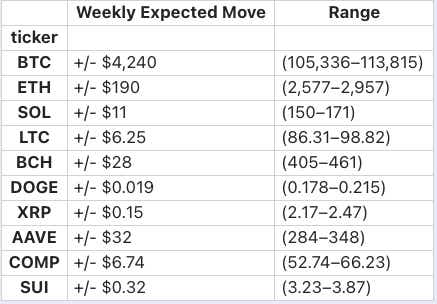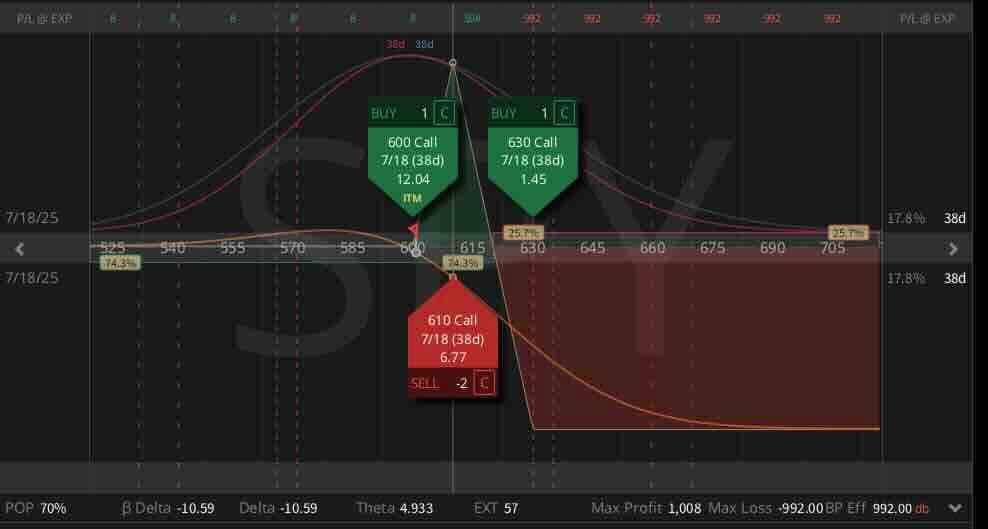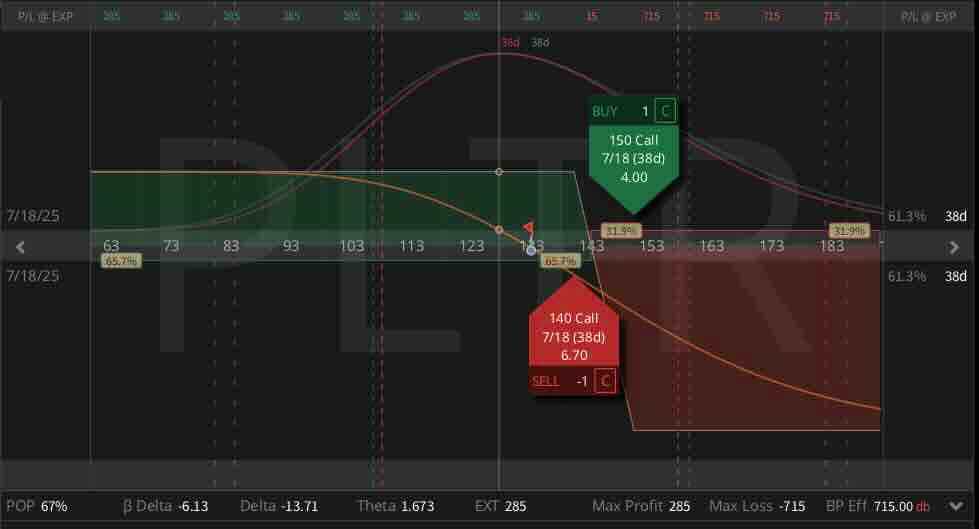Picking the Right Bitcoin Exchange-Traded Fund

Picking the Right Bitcoin Exchange-Traded Fund
We prefer IBIT over BITO. Here's why.
The two main crypto exchange-traded funds (ETFs) both cover bitcoin.
IBIT, a spot Bitcoin ETF, directly holds bitcoin with a 0.25% expense ratio. It closely tracks the crypto’s price.
BITO, a futures-based bitcoin ETF, has a 0.95% expense ratio that invests in Bitcoin futures contracts instead of bitcoin itself.
We prefer IBIT because the volume is 10 times greater than with BITO. Nearly $2 billion worth of this symbol is trading per day (and we use SPY as a comparison).

BITO is an OK product, but it uses futures and thus has an additional annual drag. The money not invested in futures is then invested in Treasuries.
This "cash-flow" is the reason it includes a dividend. But dividends aren't free money — the product will drop by the size of the dividend.
Unless you have a particular reason for doing so, we prefer the more widely traded IBIT. IBIT holds actual Bitcoin instead of futures, has a much lower expense ratio (0.25% vs. 0.95%) and doesn't have the hidden costs from rolling futures contracts. You get cleaner bitcoin exposure without the complications.
1,750 shares of IBIT = 1 BTC/USD
What is a carry trade in FX?
A carry trade is a strategy using forex pairs where you:
Borrow money in a currency with a low interest rate (short);
Invest it in a currency with a higher interest rate (long).
The goal? Make money from the difference in interest rates between the two currencies. This is called the "carry."
Frank and Paul explain the trade more here:
We include some calculations here showing how much this daily carry amounts to per $10,000 traded.

So what's the catch?
Carry is only one part of the trade. The currency’s price movement matters, too. These aren’t “set-it-and-forget-it” positions because they need active management — just like any other trade would. A gain from carry can be wiped out by a loss in the underlying currency move. The currency’s price movement also matters. But a carry does provide for an important strategic aspect of trading currencies.
Open an account without new forex platform in tastytrade:
Crypto Ranges
tastytrade makes 20 tokens available to trade on the platform:
tastycrypto has a newsletter as well:

Two Trade Ideas
SPY ($600.56) Call Broken Wing Butterfly (JUL) $0.08 Credit
They say "never short a dull market.” The S&P 500 has been grinding higher on low volume going into the summer. If you think it might continue but want to avoid the potential headline noise, a call broken wing butterfly is an interesting setup here. Playing for just under or at new highs in the next 38 days, with no risk to the downside, being long the 600 call, short 2x the 610 calls, and long 1x the 630 calls is a risk one to make one wide broken wing butterfly.

Palantir Technologies (PLTR) ($133.08) Short Call Spread (JUL) $2.85 Credit
One of the cogs in the "bro basket" is it’s one of the higher volatility underlyings on the board. If you’re looking for short delta at highs, with a relatively high volatility, the 140/150 short call spread trades at around 1/3 the width of the strikes with a roughly 67% probability of profit.

Our newsletter even counts as "research" when your boss walks by. Forward this email to your friends so they can subscribe to our newsletters, too! Get weekly data-driven trade ideas with Cherry Picks and daily pre-market insights and trade ideas with Cherry Bomb.
Michael Rechenthin, Ph.D., (aka “Dr. Data”), managing director of research and development, has 25 years of trading and markets experience. He’s known best for his weekly Cherry Picks newsletter. On Thursdays, he appears on Trades from the Research Team LIVE.
Nick Battista, tastylive director of market intelligence, has a decade of trading experience. He appears Monday-Friday on Options Trading Concepts Live. On Wednesdays, he co-hosts Johnny Trades. @tradernickybat
For live daily programming, market news and commentary, visit tastylive or the YouTube channels tastylive (for options traders), and tastyliveTrending for stocks, futures, forex and macro.
Trade with a better broker. Open a tastytrade account today. tastylive Inc. and tastytrade Inc. are separate but affiliated companies.
Options involve risk and are not suitable for all investors. Please read Characteristics and Risks of Standardized Options before deciding to invest in options.
tastylive content is created, produced, and provided solely by tastylive, Inc. (“tastylive”) and is for informational and educational purposes only. It is not, nor is it intended to be, trading or investment advice or a recommendation that any security, futures contract, digital asset, other product, transaction, or investment strategy is suitable for any person. Trading securities, futures products, and digital assets involve risk and may result in a loss greater than the original amount invested. tastylive, through its content, financial programming or otherwise, does not provide investment or financial advice or make investment recommendations. Investment information provided may not be appropriate for all investors and is provided without respect to individual investor financial sophistication, financial situation, investing time horizon or risk tolerance. tastylive is not in the business of transacting securities trades, nor does it direct client commodity accounts or give commodity trading advice tailored to any particular client’s situation or investment objectives. Supporting documentation for any claims (including claims made on behalf of options programs), comparisons, statistics, or other technical data, if applicable, will be supplied upon request. tastylive is not a licensed financial adviser, registered investment adviser, or a registered broker-dealer. Options, futures, and futures options are not suitable for all investors. Prior to trading securities, options, futures, or futures options, please read the applicable risk disclosures, including, but not limited to, the Characteristics and Risks of Standardized Options Disclosure and the Futures and Exchange-Traded Options Risk Disclosure found on tastytrade.com/disclosures.
tastytrade, Inc. ("tastytrade”) is a registered broker-dealer and member of FINRA, NFA, and SIPC. tastytrade was previously known as tastyworks, Inc. (“tastyworks”). tastytrade offers self-directed brokerage accounts to its customers. tastytrade does not give financial or trading advice, nor does it make investment recommendations. You alone are responsible for making your investment and trading decisions and for evaluating the merits and risks associated with the use of tastytrade’s systems, services or products. tastytrade is a wholly-owned subsidiary of tastylive, Inc.
tastytrade has entered into a Marketing Agreement with tastylive (“Marketing Agent”) whereby tastytrade pays compensation to Marketing Agent to recommend tastytrade’s brokerage services. The existence of this Marketing Agreement should not be deemed as an endorsement or recommendation of Marketing Agent by tastytrade. tastytrade and Marketing Agent are separate entities with their own products and services. tastylive is the parent company of tastytrade.
tastyfx, LLC (“tastyfx”) is a Commodity Futures Trading Commission (“CFTC”) registered Retail Foreign Exchange Dealer (RFED) and Introducing Broker (IB) and Forex Dealer Member (FDM) of the National Futures Association (“NFA”) (NFA ID 0509630). Leveraged trading in foreign currency or off-exchange products on margin carries significant risk and may not be suitable for all investors. We advise you to carefully consider whether trading is appropriate for you based on your personal circumstances as you may lose more than you invest.
tastycrypto is provided solely by tasty Software Solutions, LLC. tasty Software Solutions, LLC is a separate but affiliate company of tastylive, Inc. Neither tastylive nor any of its affiliates are responsible for the products or services provided by tasty Software Solutions, LLC. Cryptocurrency trading is not suitable for all investors due to the number of risks involved. The value of any cryptocurrency, including digital assets pegged to fiat currency, commodities, or any other asset, may go to zero.
© copyright 2013 - 2025 tastylive, Inc. All Rights Reserved. Applicable portions of the Terms of Use on tastylive.com apply. Reproduction, adaptation, distribution, public display, exhibition for profit, or storage in any electronic storage media in whole or in part is prohibited under penalty of law, provided that you may download tastylive’s podcasts as necessary to view for personal use. tastylive was previously known as tastytrade, Inc. tastylive is a trademark/servicemark owned by tastylive, Inc.